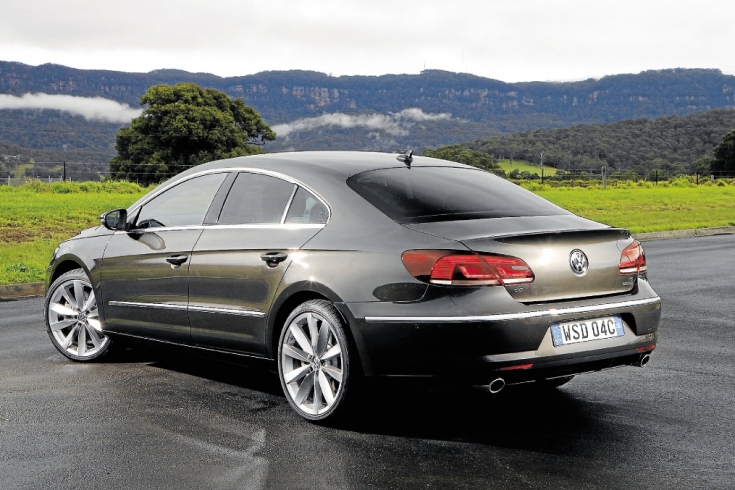Four-door coupes make a lot of sense in today’s world. As the baby boomers get older and their limbs get stiffer they want the convenience of a four-door sedan but love the idea of driving a sleek, stylish two-door coupe.
Mercedes-Benz began the four-door coupe trend with its CLS in the early years of the 21st century.
Volkswagen’s Passat CC was the first of the affordable cars in the class. In an interesting move, the German giant has decided not to call the all-new model a Passat, but simply a ‘CC’.
The CC follows the latest VW design theme, with sleek lines that give it a low profile.The large VW badge in the bootlid acts as the boot handle and also houses the rear-view camera. Despite the low, sleek exterior, cabin headroom has not been compromised.
Those in the rear compartment greatly appreciated being able to get in and out through normal doors, instead of having to crawl past folded front seats, as is the norm in a two-door coupe. They added that you have to be aware of the lower-than-average door opening, particularly when getting into the CC.
Soft-touch cabin surroundings and leather trimmed seats continue the feel of the exterior quality.
The boot is relatively shallow but, cleverly, it can be opened by making a kicking movement under the rear of the car. You need to have the key in your pocket or bag so that the CC senses you’re authorised to open the bootlid in this manner.
Volkswagen CC comes with the choice of two engines — a 3.6-litre V6 FSI petrol putting out 220kW of power and a 2.0-litre TDI common-rail turbo-diesel delivering 125kW. Both engines produce 350 Nm of torque: the petrol between 2400 and 5300 rpm, the diesel from a low 1750 revs.
Both engines sit beside a six-speed DSG double-clutch automatic that has a semi-manual mode using either the gear lever or steering wheel-mounted shift paddles.
Our test car was the petrol, which not only has the extra smoothness provided by a V6 engine and petrol injection but also VW’s 4Motion all-wheel drive system. The latter provides added traction on slippery surfaces or when pulling sharply out of a side street into a small gap in heavy traffic. Just the thing for helping us make time during the school holiday period when dithery drivers slow us locals up.This powertrain can accelerate the big coupe to 100 km/h from rest in just 5.6 seconds.
Yet on test we found the VW CC using only eight to ten litres per 100 kilometres around town.
Getting petrol consumption below seven litres per hundred when touring was simple with a bit of attention to economy driving.







